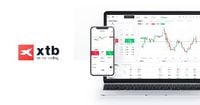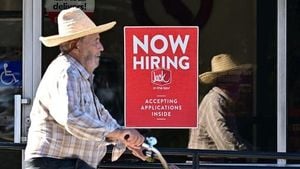Alphabet shares experienced a significant drop of 7% on Wednesday, May 7, 2025, closing near $151, after reports emerged that Apple is considering integrating AI-powered search options into its Safari browser. This potential move has raised concerns that Apple could eventually replace traditional search engines like Google, which has long been the default search option on Safari due to a lucrative partnership between the two tech giants.
This partnership sees Alphabet paying Apple an estimated $20 billion annually to make Google the default search engine on Safari, alongside a revenue-sharing agreement. However, the recent news has intensified fears that advances in artificial intelligence are threatening Google's core business model, which heavily relies on online search and advertising revenue.
Since the start of the year, Alphabet's shares have plummeted by 20%, reflecting investor anxiety over an economic slowdown that could lead to reduced advertising spending. The stock's decline has been marked by technical trading patterns, including a breakdown below the lower trendline of a rising wedge pattern, indicating a continuation of the downward trend.
Technical analysts have identified key support levels to watch on Alphabet's chart. The first significant support level is around $141, which could attract buying interest as it aligns with previous lows and peaks from late 2023. Should the stock fall below this level, it may retreat further to approximately $131, where investors might find new entry points.
Conversely, during any recovery attempts, the $165 mark will be crucial, as it corresponds to the peak of the rising wedge pattern and aligns with last November's trough. A close above this threshold could potentially propel shares to $182, offering profit-taking opportunities for investors who have accumulated shares at lower prices.
Meanwhile, the Nasdaq 100 futures have shown a positive trend, rising over 1.3% to breach the 20,100 points mark. This uptick comes amid optimism surrounding media reports that suggest former President Donald Trump plans to repeal stringent AI-related regulations imposed by the Biden administration. Nvidia shares, a key player in the AI chip market, have also risen nearly 2% in pre-market trading, nearing the $120 mark.
According to anonymous sources, the U.S. administration is preparing to withdraw global restrictions related to chip exports, which had been a contentious issue in the broader debate over artificial intelligence regulation. This potential policy shift is seen as a positive development that could ease tensions between the U.S. and China, especially with upcoming negotiations scheduled in Switzerland.
The Trump administration's reported intention to not enforce the AI diffusion rule, set to take effect on May 15, 2025, signals a significant departure from the Biden-era policy that classified countries into three tiers for chip export regulations. This change could broaden access to export markets for AI firms and data center operators, reducing regulatory constraints on their operations.
As Trump prepares for a diplomatic trip to the Middle East, including visits to Saudi Arabia and the UAE, both nations have expressed dissatisfaction with the existing limits on acquiring AI chips. The proposed repeal of these regulations could facilitate greater cooperation and trade in AI technologies between the U.S. and its international partners.
Investors are closely monitoring these developments, as they could have far-reaching implications not only for companies like Alphabet and Nvidia but also for the broader tech industry. The market's response to these regulatory changes will likely shape the landscape of AI technologies and their integration into everyday applications.
In summary, Alphabet's stock decline reflects ongoing challenges in the tech sector, particularly concerning competition from AI advancements. At the same time, the potential easing of chip export regulations under the Trump administration could revitalize investor confidence in companies like Nvidia, showcasing the complex interplay between regulatory environments and market dynamics.




